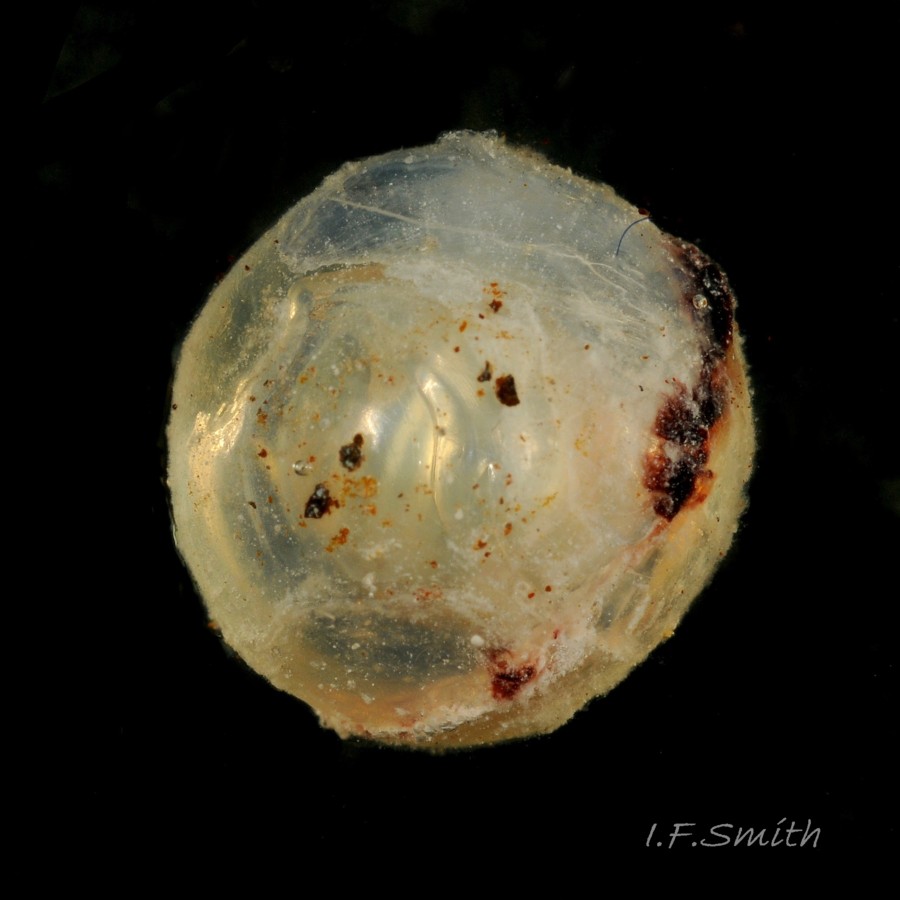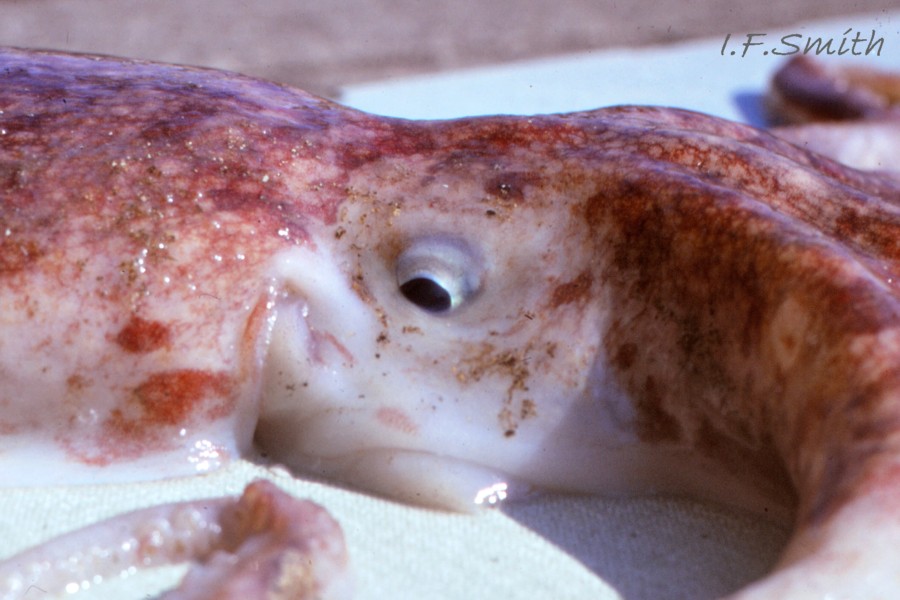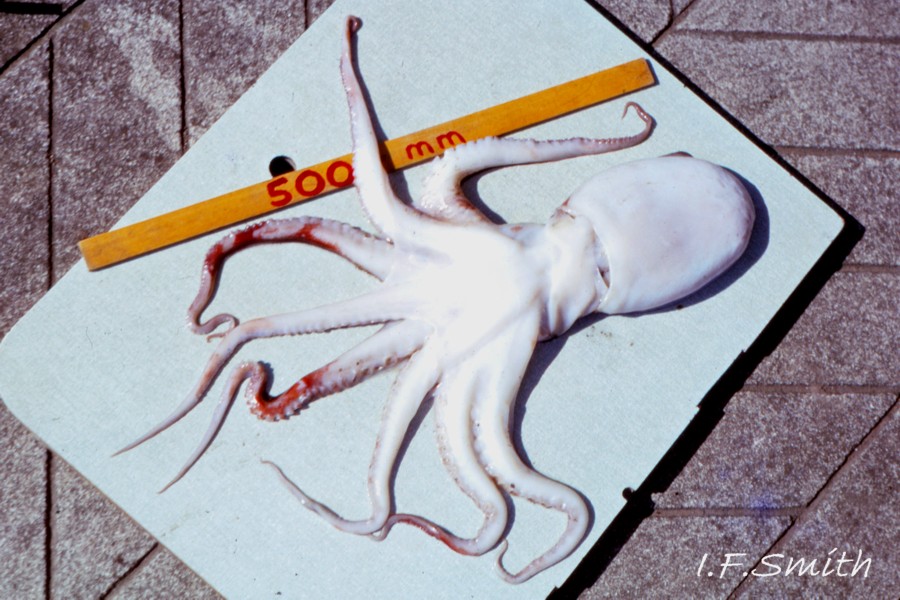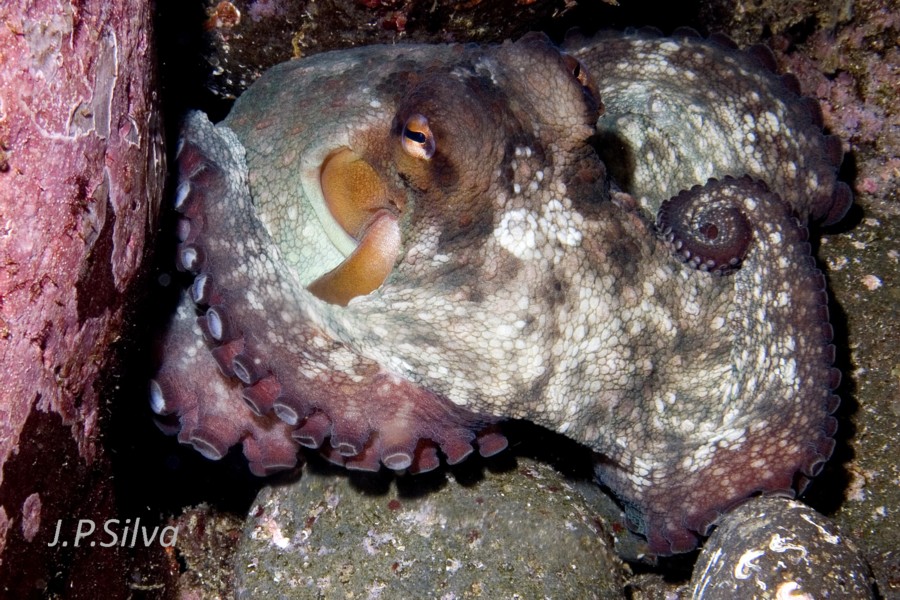Eledone cirrhosa. Dorsal surfaces of mantle, head and arms orange-red. Tuberculate surface, can vary to smooth. Ventral exhalent respiratory funnel extended from left. April 2010. North Wales.
Species
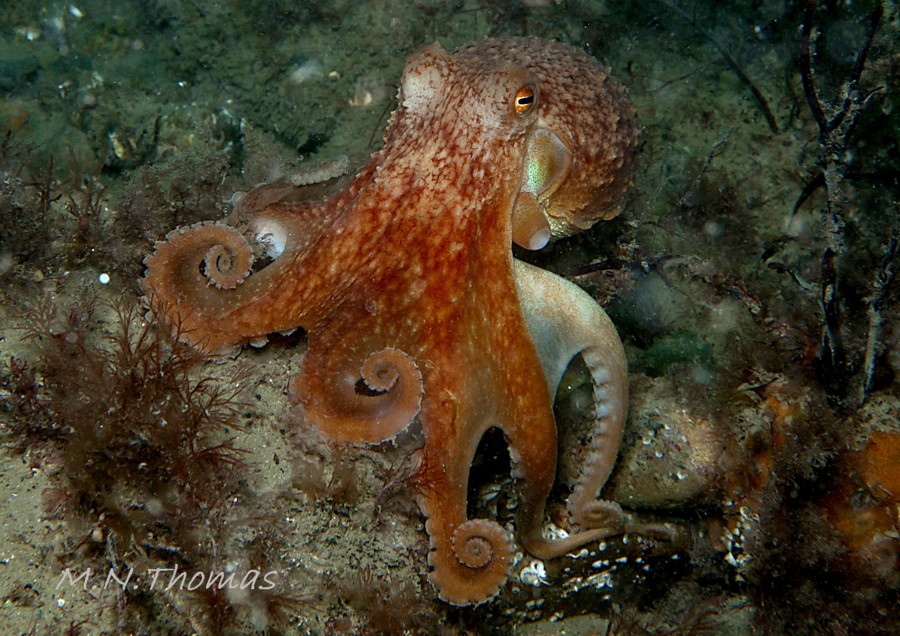
Photographer / copyright holder
Eledone cirrhosa. Ventral surface white, clearly demarcated from dorsum by pale rim around lateral periphery of mantle. Mainly benthic, moving on arms, but jet propels water from exhalent funnel for rapid escape. April 2010. North Wales.
Species

Photographer / copyright holder
Eledone cirrhosa. Tuberculate surface, can vary to smooth . Large, highly-developed eyes positioned laterally with substantial rim which can be lowered. Pupils are horizontal slits, so slit aperture permits good vision. April 2010. North Wales.
Species
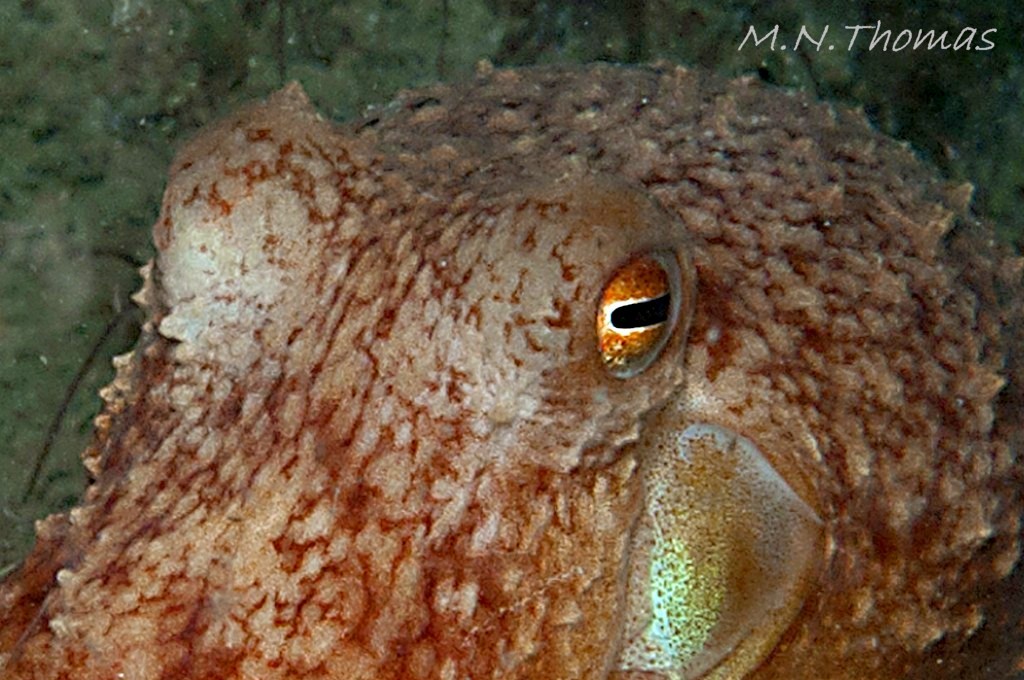
Photographer / copyright holder
Eledone cirrhosa. Mantle an oval bag, fused with head dorsally. Ventral exhalent respiratory funnel extended from right. April 2010. North Wales.
Species
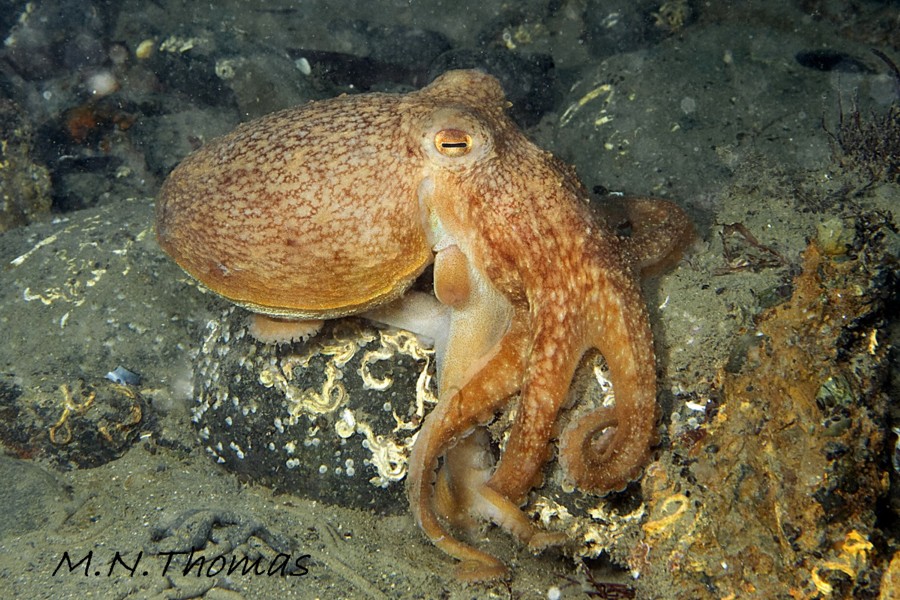
Photographer / copyright holder

